Photographs: Reuters Vinayak Chatterjee
It was the best of times, it was the worst of times, it was the age of wisdom, it was the age of foolishness, it was the epoch of belief, it was the epoch of incredulity, it was the season of Light, it was the season of Darkness, it was the spring of hope, it was the winter of despair . . ." -- Charles Dickens (A Tale of Two Cities).
Any young Indian reading Dickens' 19th century novel in 2010 may be forgiven for thinking that this famous opening paragraph is all about our country's 5,545-odd cities, towns and urban agglomerations.
On the one hand, we have an India 'shining' in its cities with sparkling malls, multiplexes, condominiums and classy airports. On the other hand, we have a sordid urban India with crumbling infrastructure, unplanned growth, mushrooming slums and utter lack of civic governance and accountability.
It is in this schizophrenic context that a report by the McKinsey Global Institute -- titled India's urban awakening: Building inclusive cities, sustaining economic growth -- is not just timely, but a loud and clear wake-up call for India to manage its cities better.
. . .
Tattered infrastructure: How Indian cities can become world class!
Photographs: Reuters
It is not that enlightened citizens and the government have been totally oblivious of the enormity of the urban problem. A group in Bengaluru, comprising eminent corporate citizens and conscientious NGOs, had set up the Bangalore Agenda Task Force (BATF) over a decade ago to rejuvenate the city and provide a clear model of how citizenry could work alongside the government.
Enthusiasts like Swati and Ramesh Ramanathan and V Ravichandar continue to soldier on for the cause from their Bengaluru base.
From time to time, a few bright and committed bureaucrats in urban administration positions provide energetic sparks of reform across a scattering of cities like Thane, Patna, Nagpur, Surat, Indore and so on. They, however, end up getting transferred, and more often than not, the spark dies with their departure.
After decades of somnolent existence, allotting bungalows to politicians and bureaucrats, the Union urban development ministry found an answer to its existential dilemma by getting to implement the widely publicised Jawaharlal Nehru National Urban Renewal Mission (JNNURM).
. . .
Tattered infrastructure: How Indian cities can become world class!
Photographs: Reuters
The McKinsey report grimly observes:
"This is a stark warning for India. If India continues with its current unplanned urbanisation path, it will result in a sharp deterioration in the quality of life in its cities, putting even today's rates of economic growth at risk."
The report predicts dire consequences if planned urbanisation is allowed to drift. It notes: "Even at today's urban scale, India is struggling. The infrastructure of its cities is looking decidedly tattered and access to basic services in urban areas continues to be poor."
"Superimpose a surge in demand for services from an expanding urban population and rising incomes, and India's aspiration for social cohesion and sustainable economic growth could reach a breaking point," the report says.
"The risk is that the quality of life in urban India will deteriorate, gridlock will hopelessly compromise productivity, and investors will decide that India's cities are too chaotic for their businesses to thrive," it adds.
. . .
Tattered infrastructure: How Indian cities can become world class!
Photographs: Reuters
The report details five dimensions of the management of urbanisation that together constitute a potential operating model. They are funding, governance, planning, sectoral policies and shape.
1. Funding
In countries around the world, governments have devised mechanisms to ensure that cities have reliable access to four sources of funds: land monetisation; property taxes and user charges; debt and private participation; and a formula-based grant system from the government.
With some exceptions, India has barely leveraged these sources of funding, resulting in significant underinvestment (one-eighth of what is necessary) in its cities.
In addition, the central and state governments do not follow a systematic formula in their approach to provide funds to cities.
. . .
Tattered infrastructure: How Indian cities can become world class!
Photographs: Reuters
2. Governance
India has not devolved power to the local level, leaving states to run cities from a distance and with weak accountability.
India is the only G20 country that has not adopted a system in which empowered mayors run cities, and where dedicated expert agencies deliver services.
Moreover, Indian cities have a large shortage of administrative and technical talent.
. . .
Tattered infrastructure: How Indian cities can become world class!
Photographs: Reuters
3. Planning
Effective and systematic urban planning has been part of the fabric of successful cities for decades.
Indian urban plans, on the other hand, exist on paper but have little impact on the ground. The choices that India's cities make on land use and other aspects of planning are ad hoc.
Exemptions are so systemic that there is a very weak relationship between what plans prescribe and the decisions that unfold at the local level.
. . .
Tattered infrastructure: How Indian cities can become world class!
Photographs: Reuters
4. Sectoral policies
This refers to policies in job creation, public transportation, affordable housing and climate-change mitigation.
India has not found a large-scale, economically viable model that can be executed nationally.
As a result, 17 million households live in slums, a number that could double by 2030.
. . .
Tattered infrastructure: How Indian cities can become world class!
Photographs: Reuters
5. Shape
There is no evidence that the central and state governments in India are addressing the issue of how best to shape its portfolio of cities to maximise their potential to drive growth.
The report goes on to make recommendations for tackling each of these five areas.
Anybody with even a minimal interest in urbanisation would do well to read this extremely comprehensive and insightful document.
. . .
Tattered infrastructure: How Indian cities can become world class!
Photographs: Reuters
If McKinsey were, at some time, to do an update of this work it could consider including some additional dimensions. Suggestions here relate to:
Implementing the 74th Amendment: What would it take to politically push this through with the states, much like goods and services tax (GST) or the National Rural Employment Guarantee Act (NREGA)?
How could the provisions of the 74th Amendment be made to fire the imagination of the civic electorate, much like the Right to Information Act did?
. . .
Tattered infrastructure: How Indian cities can become world class!
Photographs: Reuters
Urban transportation: What are the spectrum of choices and their linkages with urban planning?
Creation of new cities: What is the decision matrix in the allocation of outlays for new cities much like decisions relating to Chandigarh and Gandhinagar in yesteryears; or even like Naya Raipur capital city or the Delhi-Mumbai industrial corridor towns under planning.
Rural rejuvenation as a solution to urban migration: Under Dr A P J Abdul Kalam's presidency, there was much talk about Provision of Urban Amenities to Rural Areas (PURA) as a means of relieving the pressure on urban migration.
. . .
Tattered infrastructure: How Indian cities can become world class!
Photographs: Reuters
Where does this model fit, if at all, in discussions on urbanisation?
In 1927, US historian Katherine Mayo wrote a book titled Mother India, which was a polemical attack against Indian self-rule. Mahatma Gandhi had dismissed it then as a 'gutter-inspector's report'.
Critics of the movie Slumdog Millionaire also chastised it as a gutter-inspector's production. Bharat Mata, in the early 21st century, may earn the same sobriquet if we do not give our urban infrastructure the urgent attention it deserves.
The author is the chairman of Feedback Ventures. The views expressed are personal.

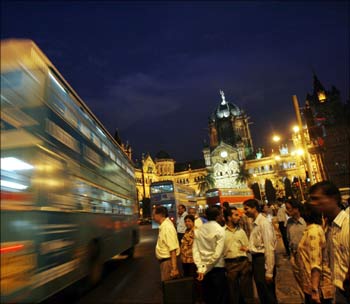

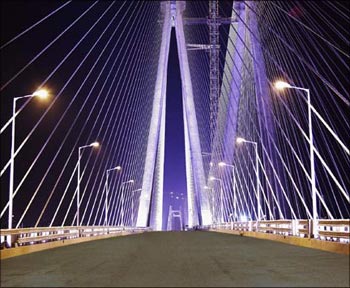


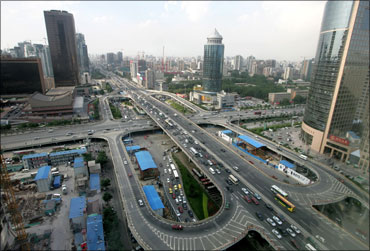
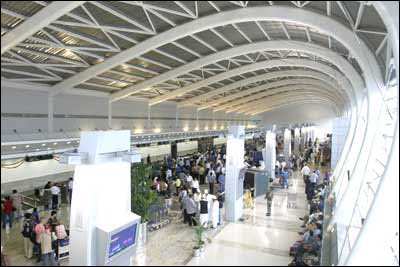
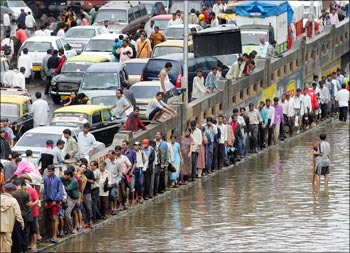
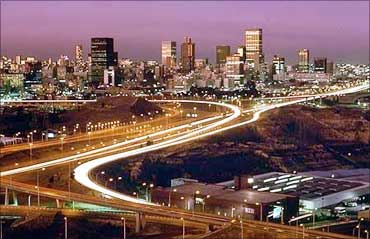
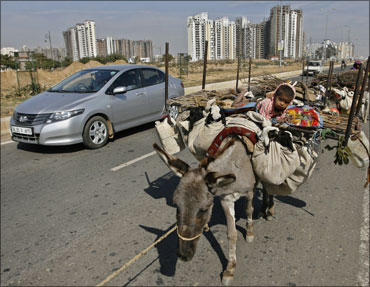
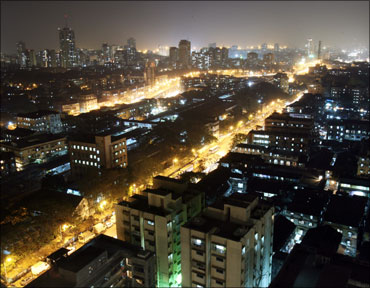

article